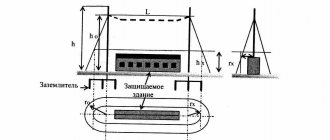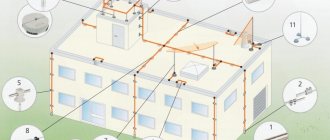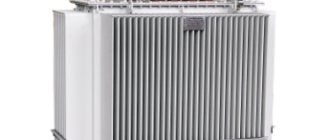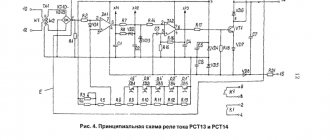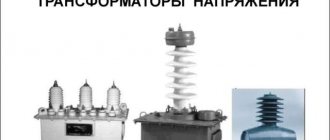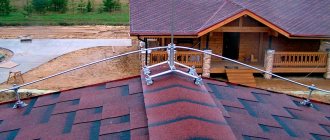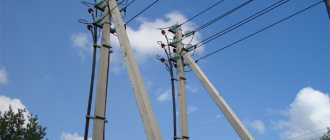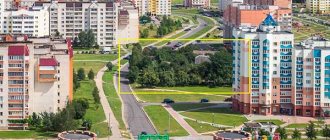Modern construction involves the use of various protection systems, which are implemented in private and multi-storey buildings. The presence of grounding is becoming the norm, since it allows not only to save on equipment repairs, but also to protect residents from electric shock. Another important system that should be present even in a multi-storey building is lightning protection? How can it be implemented? This will be discussed in the article.
Is protection really necessary?
It is quite difficult to call lightning flashes something unusual, since every person in his life is constantly faced with their impact. The experience begins when it hits a specific building or causes certain damage. Multi-storey buildings are magnets and lightning rods for lightning, because due to their high altitude they serve as easy targets for lightning strikes. If this happens, then the discharge will not necessarily go into the power supply network at home. Due to overheating of certain elements, a fire may occur, which will cause maximum damage.
If we compare the cost of constructing a lightning rod for a multi-story building with the benefits that a lightning rod can bring, then the costs can be considered negligible. With the right approach, a lightning rod can be made with your own hands from available materials. At the same time, the need for such a protection system in the form of a lightning rod is simply ignored. This is due to the misunderstanding by many of the nature of lightning and the possible consequences of its strike. It may be a misconception that if the roof is made of metal, then you don’t have to think about a lightning rod. In fact, this is just a misconception. When struck by lightning, it may be dispersed over the roof area, but it heats it to high temperatures, which leads to fires. This is due to the fact that under the sheets of metal there are wooden rafters that flare up like matches.
Note! Indeed, there are cases when installing a lightning rod on a multi-story building may not be necessary. This condition is the presence of another multi-storey building nearby, the height of which is 10 meters higher. In this case, residents of a tall building should think about installing a lightning rod.
Lightning protection of residential buildings and its purpose
Surely, everyone has several sad stories about how negligence in lightning protection cost people lost property, and some even their lives. These examples clearly demonstrate how dangerous messing with nature can be.
Thus, lightning protection is needed first of all:
- To protect people, as well as electrical equipment and other property;
- To normalize the electromagnetic background;
- To prevent the possibility of ignition of various materials.
In other words, the main task of this system is to prevent lightning from reaching the surface of the roof and its other elements.
Classification of objects
Experts in their field have compiled a classification of objects into categories. The latter indicate how much a particular object needs a lightning rod. The first category, due to the need for lightning rods, includes a certain part of industrial facilities whose operation is associated with explosive substances. The second category of objects where it is necessary to install lightning rods are warehouses where ammonia refrigerators are installed, fuel is stored or feed is produced. The third group includes buildings that are used on a daily basis. They include hospitals, schools, kindergartens, pipes from factories and boiler houses, and houses whose height exceeds 30 meters. It is believed that other objects are safe and do not need a lightning rod, but from time to time they are also affected by lightning.
How to choose equipment for external lightning protection
As mentioned above, external lightning protection consists of only a few elements: lightning rod, down conductor and grounding. However, it is quite difficult to select suitable elements without special skills and knowledge. Fortunately, today there is a special program - a lightning protection calculator. Working with it is as simple as possible. It is enough to indicate the height, width and length of the building, as well as the region in which your home is located.
After this, the program will display the optimal mast height, cable thickness and grounding power. It only takes a few minutes! You don’t have to spend a lot of time studying the instructions for the installation of lightning protection and structures, also known as rd 34.21.122 87. This is a serious plus - the instructions are replete with complex terms, which makes studying it quite difficult and time-consuming.
System design
A lightning rod in a multi-storey building can be implemented in two stages or divided into two parts. It can be external and internal. Each bears a certain load from lightning to ensure the safety of residents. The external design of the lightning rod is similar to that used in private houses. The element that receives a lightning strike first is the lightning rod. Often it consists of a mast of a certain height that is installed on the roof. This is followed by conductors or a down conductor. Its task is to quickly transmit a lightning discharge to the circuit. Grounding produces rapid dissipation of the resulting lightning discharge into the ground near the building. Although the design seems simple, a more effective method has not been invented.
The inside of the lightning rod requires a professional approach. It includes a number of different modules that are designed to prevent lightning from reaching the wiring, which could paralyze and harm the entire house. Individual elements are installed in each apartment, which increases efficiency. You can make the calculations required to install the external part of the lightning rod yourself, but a number of programs have been developed to automate the process.
Protection of a multi-storey building from the introduction of high potentials
Typically, this danger can only arise in cases where there was a direct lightning strike on a power line. This danger can also be caused by the occurrence of electromagnetic induction that has formed near the power line. When this hazard enters a home, it can cause many electrical appliances to fail. In some cases it can cause danger to humans. According to statistics, many fatal cases are recorded every year that were caused by this problem. Lightning protection of multi-storey buildings is necessary in order to prevent the possibility of danger in time. Usually, for this purpose, specialists equip grounding for multi-story buildings. Remember that it does not need to be installed in all cases; read more about lightning and lightning protection.
The impulse resistance that may arise in these situations should not exceed 20 ohms. The best option to reduce resistance is to install additional grounding. Thus, you can easily make the building completely harmless.
Installation process
Once all the necessary data has been received, you can purchase all the parts for the lightning rod and begin its construction. It is necessary to carefully inspect the roof and select the highest point on it. If we are talking about a flat roof, then it can be the roof of a house that is designed to go onto the roof. The lightning rod is fixed at this point. Its role can be an ordinary metal pin or a piece of copper fittings. The cross section is displayed using the calculator. The height of the mast must be sufficient to prevent lightning from striking other roof elements. If necessary, the lightning rod mast is fixed with guy wires to prevent it from being blown away by wind and lightning.
Advice! There must be a dielectric gasket between the roof and the mast rod, which will prevent the lightning discharge from going further.
Not a metal pipe, but a wooden beam can be used as a mast. It is on this that the lightning rod must be secured. The latter is connected to the intermediate link of the lightning rod, which should consist of large-diameter copper wire. The lightning rod cable must be routed to the ground via the shortest route. In this case, an excellent solution would be to use a rainwater collection system as a box. in this case, you won’t have to worry about the cable being torn off by the wind.
Near the house, at the point where the cable will be lowered, it is necessary to dig a pit. Its depth should be no more than 80 cm. Moreover, its location is selected four or three meters from the house. It is better to choose a place where people rarely walk and cars are not parked. After this, metal pins in the form of triangle vertices are driven into the ground. They must be connected to each other by means of a metal strip or corner, which are welded on top. The length of the rod must be at least two meters, and the distance between them is calculated on a calculator. The thickness of the lightning rod fittings must be at least 12 mm. The wire coming from the lightning rod is connected to ground. Next, the pit can be buried. A video of the lightning rod installation process is below.
Where to get grounding in an apartment building
Many people take the grounding from the floor panel, connecting, as expected, the phase to the input circuit breaker, and the working zero to the zero bus. However, not everything is as simple as it might seem at first glance.
As a rule, in old buildings there is no separation of zero and grounding bus in the electrical panel. Thus, by connecting the grounding directly to the panel, it will not be possible to obtain a full, or indeed any grounding at all. This can only make the problem worse.
Since the ground wire will be connected to the working zero, which may break in an accident, as a result there will be high voltage in the wiring. Accordingly, a high voltage of 380 Volts will appear on the metal parts of the body of electrical appliances, which is very dangerous to life.
Active protection
This is a relatively new concept that is just beginning to be introduced. This lightning rod is more effective than the one described above. A conventional lightning rod is built on the principle that lightning will strike the highest object in a specific area. The task of an active lightning rod is to attract lightning. It sounds a little absurd, but this avoids problems with lightning strikes at other points in the structure. The operating principle of the design is that a high-power discharge is forcibly applied to the receiver, which should attract lightning. In this case, the lightning rod does not need to be connected to electricity; there will be sufficient static electricity in the air.
This is normal, because during a thunderstorm the electric field of the air increases. This process activates the lightning rod, which begins to release this high-voltage pulse, attracting lightning. The basis of the system is a smart electronic unit, which will cost a pretty penny. It is not recommended to install such a lightning rod design yourself, as it can turn into a disaster, so it is better to invite specialists.
Lightning protection of internal type. Peculiarities
This type of system is designed to ensure safety in case of exposure to static voltage. Such communication takes the form of an SPD. By installing it, the influence of pulse voltage is eliminated. The advantage of installing this system also lies in minimizing the secondary impact of a thunderstorm on the facility.
This approach guarantees maximum protection for all electrical equipment and people in the building. In general, such communication involves a number of activities that are aimed at eliminating risks. Lightning protection of multi-storey residential buildings must necessarily meet established requirements. This is first of all:
- reliability;
- practicality;
- uninterrupted operation;
- aesthetics.
The choice of system and its installation option should be made based on the type of object. Communication should not spoil the architectural design.
